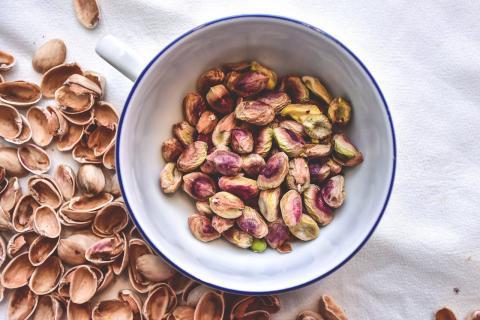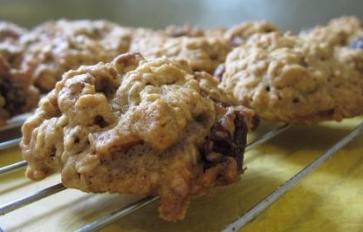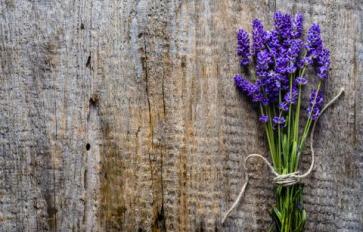
Pistachios belong to the family Anacardiaceae, commonly known as the sumac family. They are in the genus pistache P which has six species; the scientific name for the species pistachio nut is Pistacia vera L. The plant is native to regions in western Asia and was found to be eaten by people in Turkey and the Middle East as early as 7000 B.C.E. and cultivated for millennia. The tree was introduced to Europe by the Romans in the 1st century C.E. Pistachio nuts were imported to the United States until American botanist William E. Whitehouse brought the nuts to America which eventually established the commercial pistachio nut industry in California. The first United States commercial crop was introduced in 1976, producing 1.5 million pounds of pistachio nuts. The nomenclature of the plant derived from the Persian term “pistah” and when the pistachio arrived in Greek they named it “pistakion” and the French called it “pistace” from which the English term was taken. Its culinary uses are wide-ranging: as a dessert nut that is roasted and salted, as a garnish in sweet as well as savory dishes, and in European pates. The Mediterranean and Oriental dishes include them in poultry sauces, in stuffing recipes, and in hashes. Indian cuisine purees them in rice and vegetable dishes. Pistachio nuts complement veal, pork, and poultry recipes, are popular in creams, and are a favorite in ice cream.
Pistachio nuts grow on trees that need eight to ten years to mature before they can produce fruit and grow best in hot, dry summers and cool winters. For many years, the tree will produce fruit that grow in heavy clusters much like that of grapes. The pista fruit is a dupe with a large central seed that is the pistachio nut. The nut is oblong in shape and has a hard, off-white colored shell that splits open to a light green kernel. At maturity, it is approximately three-quarters of an inch in length, about one-third of an inch wide, and weighs about three-tenths of an ounce. This small nut is packed with nutrients that include vitamins A, C, and E, folates, niacin, pantothenic acid, pyridoxine, riboflavin, and thiamin. Its mineral content includes sodium, potassium, calcium, copper, iron, magnesium, phosphorous, selenium, and zinc. Other nutrients found in pistachio nuts are carotene-ß, crypto-xanthin-ß, and lutein-zeaxanthin The pistachio nut joins other nuts as a healthy addition to the diet.
Health Benefits & Uses of Pistachios
1. Pistachio nuts in the shell are an excellent snack for those who are on a weight reduction diet. It is found that those who eat the unshelled nut eat stop eating them sooner than those who eat shelled pistachio nuts, thus consuming forty-one percent fewer calories. A one-ounce serving of pistachio nuts contains 162 calories and they are known to have one of the lowest fat content of all nuts.
2. For heart health, pistachio nuts have been found to decrease the levels of LDL cholesterol. The presence of antioxidants, phytosterols, and polyunsaturated and monounsaturated fatty acids also benefit the heart. These substances reduce the free radicals that result from cellular metabolism and can cause heart disease and cancer.
3. Pistachio nuts are recommended for those individuals with diabetes. Diabetes is a result of sugars forming an inappropriate bond with protein, making them impossible for the body to absorb, a process known as glycation. The antioxidants contained in pistachio nuts reduce the process of glycation, resulting in the control of diabetes. Due to their high content of copper, pistachio nuts increase the body’s ability to absorb iron, thus reducing the risk of anemia.
4. With a high content of anti-inflammatory vitamins A, K, and E, pistachio nuts reduce the risk of diseases that are caused by inflammation. They also are rich in vitamin B6 which is essential for a healthy nervous system. It helps to build myelin that surrounds the nerve fibers, and aids in nerve cell communication and the transmission of nerve impulses. Pistachio nuts have a high content of vitamin E that protects the skin from harmful ultra-violet (UV) rays, reduces the risk of skin diseases, and lessens the onset of aging related skin spots, wrinkles, and other premature aging of the skin.
5. There are many culinary uses for pistachio nuts. They are an essential ingredient in the popular Middle Eastern pastry known as baklava, which is comprised of layers of phyllo dough filled with chopped pistachio, almonds, and cashew nuts and sweetened with honey. Pistachio nuts are crushed and sprinkled on salads and used as an ice cream flavoring as in the Indian kulfi dessert or as a milk. Pistachios can be used in cakes, breads, and candies.
Pistachio nuts are a versatile food to add to many recipes and can be made into nut milk. The small green nut nestled in a cream white shell is a popular snack food packed with many nutrients. Pistachio nuts help to reduce the risk of diabetes, heart disease, some cancers, and diseases caused by inflammation, making it deserving of being a superfood.








